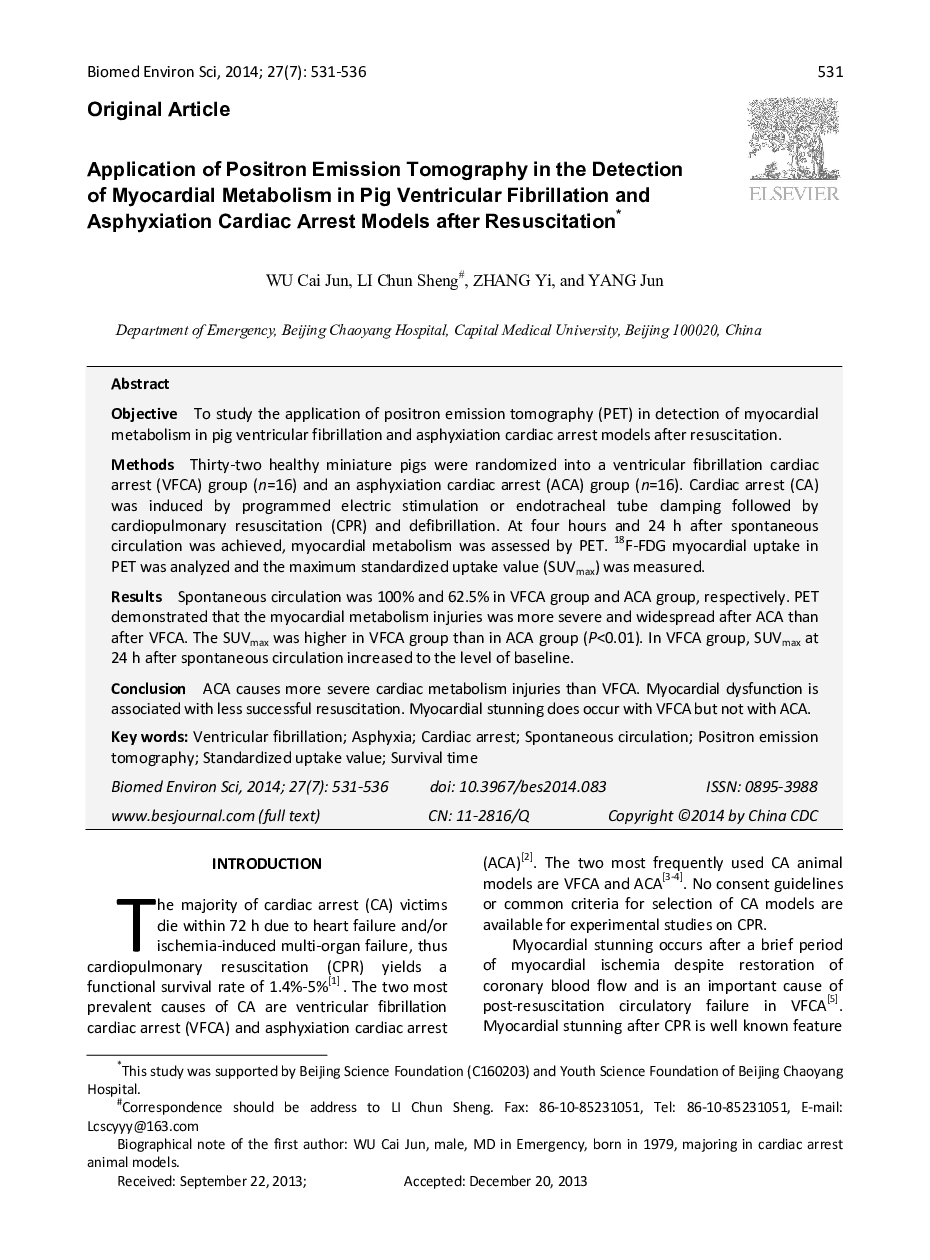| کد مقاله | کد نشریه | سال انتشار | مقاله انگلیسی | نسخه تمام متن |
|---|---|---|---|---|
| 4195992 | 1278652 | 2014 | 6 صفحه PDF | دانلود رایگان |
ObjectiveTo study the application of positron emission tomography (PET) in detection of myocardial metabolism in pig ventricular fibrillation and asphyxiation cardiac arrest models after resuscitation.MethodsThirty-two healthy miniature pigs were randomized into a ventricular fibrillation cardiac arrest (VFCA) group (n=16) and an asphyxiation cardiac arrest (ACA) group (n=16). Cardiac arrest (CA) was induced by programmed electric stimulation or endotracheal tube clamping followed by cardiopulmonary resuscitation (CPR) and defibrillation. At four hours and 24 h after spontaneous circulation was achieved, myocardial metabolism was assessed by PET. 18F-FDG myocardial uptake in PET was analyzed and the maximum standardized uptake value (SUVmax) was measured.ResultsSpontaneous circulation was 100% and 62.5% in VFCA group and ACA group, respectively. PET demonstrated that the myocardial metabolism injuries was more severe and widespread after ACA than after VFCA. The SUVmax was higher in VFCA group than in ACA group (P<0.01). In VFCA group, SUVmax at 24 h after spontaneous circulation increased to the level of baseline.ConclusionACA causes more severe cardiac metabolism injuries than VFCA. Myocardial dysfunction is associated with less successful resuscitation. Myocardial stunning does occur with VFCA but not with ACA.
Journal: Biomedical and Environmental Sciences - Volume 27, Issue 7, July 2014, Pages 531-536
